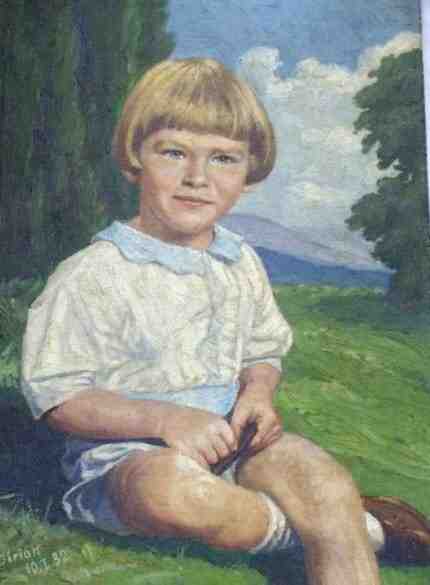
Figure 1.--This French boy was probably painted in the 1970s, however, it is dated 10 I 32. I assume that means 1932. Notice the colored scalloped collar. |

|
Fancy blouses were also worn by European boys during the 1920s and 1930s. This appears to have been particularly popular among French and Italian mothers. While much less elaborate than at the turn of the century, they would be considered very elaborate by modern standards. The blouses worn on the Continent during this period often had more ruffles than the lace worn with the Fauntleroy suits of the previous generation. These blouses were also usually not worn with large bows as was the case with many Fauntleroy suits. The neatly tied large bows seemed more popular in America than in Europe. HBC at this time has few details about different styles of blouses worn in different countries or the relative popularity in different countries. HBC believes that fancy blouses were probably most popular in France and Italy, but this is just an initial assessment at this time.
Perhaps the most famous blouses worn by American boys were the Fauntleroy blouses with lace or ruffled collars during the 1880s and 90s. Most of the these were blouses with attached collars and cuffs. All were long sleeves. Some of the lace collars pinned on, but many of the large collars seen in the old photgraphs are blouses with attached collars. These blouses came in a wide varietybof styles. They were most notable for the sometimes huge size of the collar and matching cuffs. This contrasts with the Eton collars which almost alwats were detachable collars. Yonger boys increasing in the 1930s began wearing the American version of an Eton suit. The first ones appear to have been worn with detachable Eton collars, but soon blouses with small Eton-style collars appeared. Gradually the Peter Pan collar began to replace the Eton collar wore with these suiuts. Some American boys wore blouses until about the 1980s when they became less common. Blouses were mostly worn by boys from affluent families, primarily by boys not yet of school age. A few school age boys to about 6 or 7 might wear blouses. Most of the older boys wearing blouses wore ones with Peter Pan collars often with Eton suits. By the 1980s, blouses were only worn by very young children or for formal occasions like weddings.
HBC believes that blouse styles and chronological trends in Belgium were very similar to those in France. A French reader tells us, "I am sure Frenxh-style blouses were worn in Belgum and the chronological trends and conventions were quite similar."
As in America, it was primarily boys from wealthy families that wore blouses. The were both blouses worn for play and fancy blouses worn for formal occassions. Like American boys, English boys also wore Fauntleroy blouses. English boys are more noted for wearing Eton collars, but as mentioned above, most were detachable collars and not worn as blouses. Some were worn with blouses. a good example is an unidentified boy about 1900-05.
HBC believes that fancy blouses were more commonly worn by French boys than in most other countries. We have little information on French blouses in the 19th century. We do notice images from the 1920s showing boys wearing fancy blouses with long sleeves. This style continued in the 1930s with youngers boys were wearing fancy blouses, often with short puffed sleeves. This style was especially popular after World War II in the late 1940s and early 50s. These blouses were usually front buttoning. Collar styles ranges from plaon to fancy. They were normally worn with button-on or suspender shorts. They were also worn with romper bottoms which looked like barboteuses.
"Blusen" or blouses in English, were, and in fact still widely are, womens wear.
Blusen for men may be sailors, soldiers, or peasants. A blouson is a wide and heavily bloused bluse (bauschig in German). It is worn over the dress and held by a "Riegel" (a broche) under the waist.
HBC believes that fancy blouses were also popular in Italy. No details, however, are available yet.
No details are available yet.
Blouses were very common for children in the 19th century. Many blouses buttoned onto trouers which held them up In the later-19th century blouses often had drawstring closures which caused the garment to blouse out giving the garment its modern name. These were Western European styles. Peter the Great (r 1682/96-1725) promoted Western clothing styles part of his efforts to modenize the country. Thus we see blouses being worn by both the Russian elite and growing middle-class in the 19th century. This was a growing, but small part of the Russian population. Most of the people, however, lived in the countryside. A substantial part of the rural population were serfs. They were finally emancipated by Tsar Alexander II (1861). The serf population, however, remained largely landless, undereducated, and poor. They wore traditional clothing which increasingly included blouses. Women and girls wore loose fitting white blouses which often were decorated with embroidered designs. Serf boys and men commonly wore what looked like long collarless shirts that buttoned at the neck could extend down to the knees along with baggy pants. A shorter version became became a popular style even in the cities during the late-19th centyry. And in a reversal of century-long trends, a Russian style was adoped in the West--the Rusian blouse. At the turn-of- the 20 century we see boys in Western Europe and America wearing Russian blouse tunics and blouses.
Navigate the Boys' Historical Clothing Web Site:
[Return to the Main blouse page]
[Introduction]
[Activities]
[Biographies]
[Chronology]
[Clothing styles]
[Countries]
[Bibliographies]
[Contributions]
[FAQs]
[Glossaries]
[Images]
[Links]
[Registration]
[Tools]
[Boys' Clothing Home]
